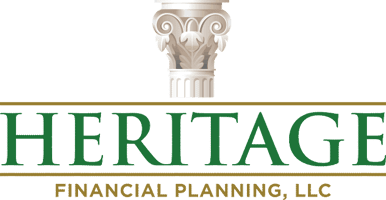From time to time, I am asked for help in jumpstarting a client’s retirement fund. Whether behind on savings because of divorce, a business setback, or just getting a late start, an investor can usually take certain steps to get back on track. While each situation is different and may require a customized approach, the following steps provide big-picture guidance.
ALWAYS begin with a comprehensive financial/retirement plan. The process of building the plan will force you to do important homework, including the gathering of investment account details, setting goals, and defining the assumptions that will be used in making any type of projection.
In reviewing the account details, there are a few things that should be looked at:
- Check your bank accounts and credit cards for unnecessary spending. In particular, be on the lookout for automatic charges coming from service providers that you may no longer be using and perhaps weren’t even aware were still charging for their services. (Believe it or not, I see this a lot.)
- Review your insurance policies. Reflecting again on the value of the comprehensive financial plan, make sure that the coverage you have is appropriate for the risks that you actually face. Too often, insurance is purchased without an overall game plan, and this can result in duplication or worse. When carrying any insurance coverage, you should be able to answer the following questions: what is the cost, and what financial risk is being alleviated? Identifying inefficient insurance plans can result in savings that may be redirected toward retirement goals. Make sure to discuss this with an objective adviser and not just with an insurance agent who will only get paid by selling more policies.
- Consider the types of savings that you may already be engaged in. As a general rule, qualified retirement plans will allow an investor to sock away more money than non-retirement accounts because of the tax savings associated with the programs.
RETIREMENT PLANS
The subject of retirement plans brings us to our next area of consideration. Whenever possible, investors seeking to get a jump on retirement savings should consider using either company-sponsored or individual retirement plans. The obvious advantage of a retirement plan is that, in most cases, the investment is made using pre-tax money.
In other words, Uncle Sam is helping you save. For example, if you decide that you can afford to save $1,000 a month, you might actually deposit around $1,500 into a 401(k). In this case, you could likely end up with only a $1,000 reduction in take-home pay thanks to Uncle Sam. Tax savings will vary depending on your marginal tax rate; if you are not sure, ask your financial professional or tax professional. Additionally, many employers also match contributions up to a certain amount which will further boost your saving efforts.
Finally, in my opinion, the most important aspect of the employer-sponsored retirement plan is not the company match or tax savings. From my 20 years of experience as a financial adviser, I believe that the critical advantage of the 401(k) centers on the automatic discipline that comes from the payroll reduction process.
A common saying that applies here might be “out of sight, out of mind.” In other words, I have noticed that 401(k) participants are much more likely to actually follow through with their savings efforts because, once established, it takes effort to undo.
BUSINESS OWNERS
For business owners, there may be additional measures which can be taken. Generally, when we think of retirement plans, we think of the 401(k), a plan that may allow up to $57,000 in total annual contributions (plus a catch-up contribution of $6,500 for those age 50 and older).
However, for the business owner who might want to really get things kicked off, there is another option: The defined benefit plan, more commonly known as a pension, may actually allow significantly higher pre-tax contributions.
The rules governing defined benefit plans are complicated, so those contemplating such a strategy should seek qualified advice from a financial professional. In times like this, you can count on us to provide guidance, resources, and advice for the betterment of your future.
If you have any questions or concerns, please give us a call at our office at (574) 606-4406.
Sources:
- Adapted from original article: https://www.letsmakeaplan.org/financial-topics/articles/retirement-planning/jumpstarting-retirement-funds





 Click here to learn more about our HFP STAR Strategy process & discover what sets us apart from all the rest.
Click here to learn more about our HFP STAR Strategy process & discover what sets us apart from all the rest. 






